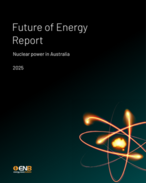This article is 20 years old. Images might not display.
On Monday the price of crude oil topped out at $40.05 on New York's Nymex exchange for the first time in over a decade, just shy of the record $41.15, reached in October 1990 after Iraq invaded Kuwait.
Consequently petrol prices are soaring and George W Bush’s popularity is falling, with overpriced petrol always a death-knell to presidents seeking a second term.
Whether this is the case or not the recent US actions in Iraq are being blamed by many people around the world as the reason for the surge in crude prices, no matter what OPEC has been doing to its quotas.
The continuing stream of prisoner abuse pictures coming out of Iraq’s infamous Abu Ghuraib jail has heightened tensions to a new level in the Middle East, along with continued attacks on vital oil pipelines and renewed fundamentalist actions in Saudi Arabia.
The US has maintained that OPEC’s insistence in cutting its production quotas has left an oil shortage around the world, especially in the Asia Pacific where a booming Chinese economy is competing with the traditional Japanese powerhouses for a dwindling supply.
OPEC in its turn has maintained its theory of a mid year oversupply due to a fall in demand during the northern summer.
However, for the first time this year a concession has appeared possible with Saudi Arabian Oil Minister Ali al-Naimi calling on the OPEC members to increase production quotas by at least 1.5 million barrels a day to protect the global economy.
The simple statement had an immediate affect in dropping prices 2.5% back below the magical $40 mark.
The quota increase will now be discussed among OPEC oil ministers during the International Energy Forum in Amsterdam next week. OPEC ministers should issue a decision to increase quotas during their meeting on June 3 in Beirut, the Saudi minister said.
However, New York oil prices have gained 13.5% in the past six weeks as the attacks in Saudi Arabia and Iraq heightened concerns about the security of supplies from the Middle East.
Additionally record gasoline consumption and low fuel stockpiles in the U.S. have also driven oil prices higher, which both point to the fact that there is more behind the price increase than the current number of barrels being produced every day.






















